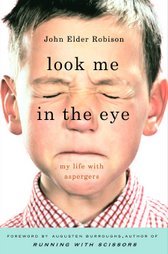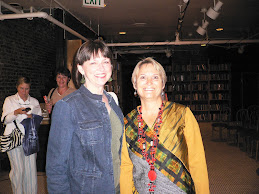This assignment is about creating scenes, stringing them together, making sure each one builds on the one before and leads up to the one after.
This scene starts out with Anne arriving at the meeting hall where you create a detailed setting we can easily slip into. The light is on in the attic. As soon as possible, right away, you want to announce her goal in the scene so that we can jump on board with Anne, want what she wants, start cheering her on.
Since you’ve already opened this scene with Anne, you need to stay with her viewpoint instead of moving to Helen. You want to create one scene for one character, develop one conflict, play that conflict out to its crisis point, before introducing a new scene (different time, different setting) with another character, if it’s necessary to change viewpoints. You use asterisks to indicate a change of scene, but what constitutes a new scene is a new conflict, new setting, different time.
Helen and Jean rush into the building and encounter Anne right away. I’ve already evaluated this scene, and I’m not sure I have anything new to say. We don’t really penetrate Helen’s head much, and so there will be little emotional investment for the reader, I’m afraid. Whether you choose Anne or Helen for this entire scene, we need to know what’s at stake and what the character’s goal is in the scene.It doesn’t work to switch to Anne in the middle of the action like this. Again, this is the same scene, so it’s jarring to be inside of Helen, then suddenly inside of Anne. Can you see that at all?
Anne thrusts the door open and no one’s there. The two women are relieved, and you use asterisks to indicate another change of scene, but in reality, again, this isn’t another scene. Get rid of the asterisks. They’re not enough to cause a scene change. As I mentioned, you need to introduce a new conflict, new setting, new time in order for there to be a scene change. So far, this is all one scene, and so far, I still don’t know what’s at stake for your characters. As they start preparing for the meeting, I can’t figure out whose viewpoint we’re in.
We move to Ann. The man falls through the ceiling, but you’re in omniscient viewpoint here. We’re watching this from a distance, not inside of a character, so again, you won’t have emotional investment from the reader. The action is playing out in a vacuum, I’m afraid. Anne learns from Helen who the man is, and the scene closes as she tries to comfort her friend.
I repeated myself in this evaluation so many times about what constitutes a scene, I know I don’t need to say it again. I just want to make sure you understand why what you have here is all one scene. Let me know if you have any questions.
I bet you’re having fun writing this story. You’re good at using your sense of humor in developing your characters and their dialogue.
Sunday, March 30, 2008
Subscribe to:
Post Comments (Atom)










2 comments:
Oh, this instructor would have her work cut out for her if she got a piece of my writing to critique! Omniscient writing is my own personal Waterloo. I have had to go back to my WIP and change every scene so that the POV is only my protaganist's. I cannot resist giving everyone's view, and I have learned that this is a huge no-no.
Once again, this is so helpful, and it is certainly something I need to have hammered in.
thanks for sharing, AW. i think you're doing great and we're learning with you and through you. it's mind blowing how much one can learn on the craft!
Post a Comment